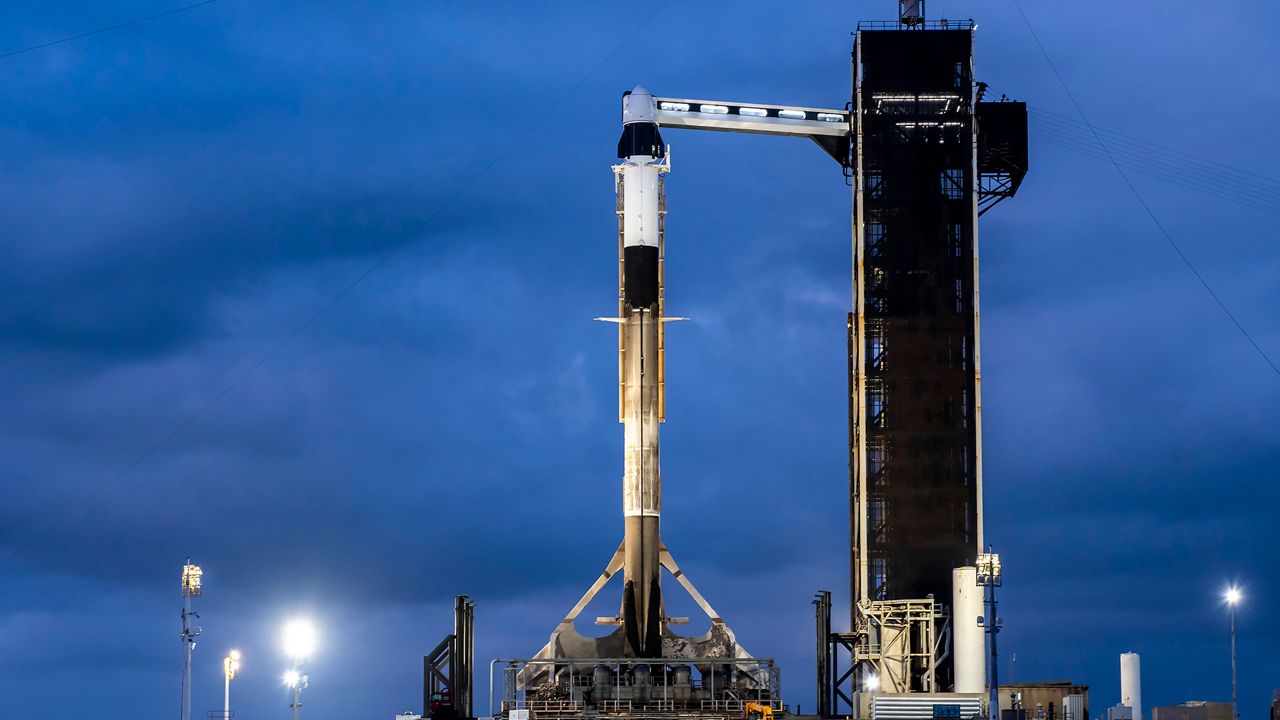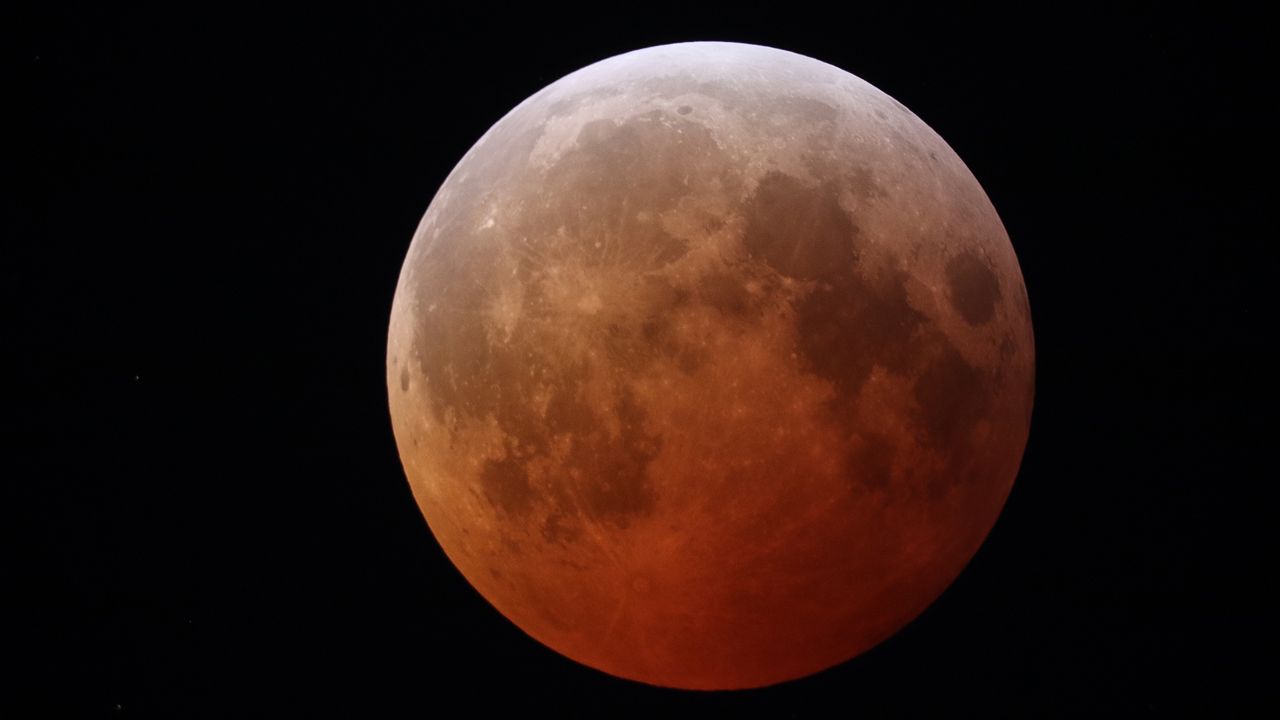CAPE CANAVERAL, Fla. — In just a matter of months, for the first time, the U.S. will bring back a sample of the early solar system in the form of about half a pound of asteroid pieces.
What You Need To Know
- NASA’s OSIRIS-REx mission launched from Cape Canaveral Space Air Station in 2016
- The spacecraft has been heading back to Earth since May 2021
- A sample of the Bennu asteroid will be deposited in Utah on the morning of Sept. 24
- After sample return is completed, the spacecraft will go on to study another asteroid in 2029
This week marks the two-year anniversary of when on May 10, 2021, the Origins, Spectral Interpretation, Resource Identification, and Security-Regolith Explorer (OSIRIS-REx) spacecraft began its journey back to Earth from the asteroid 101955 Bennu. It’s an asteroid discovered in 1999 that has a close approach to Earth every six years.
The spacecraft launched from Space Launch Complex 41 aboard an United Launch Alliance (ULA) Atlas V 411 rocket on Sept. 8, 2016.
The program cost of the mission is about $800 million, excluding the launch costs, according to the 2016 NASA press kit. Add in $183.5 million for launch services and the total cost comes to nearly a billion dollars.
On Oct. 20, 2020, it successfully performed the Touch-and-Go (TAG) part of the mission, which allowed it to collect what project scientist Dr. Jason Dworkin estimates to be about “250 grams, plus or minus 100,” well above the minimum threshold they set for success, which was 60 grams.
“I’m all about the sample about collecting a piece of the ancient solar system to understand the origin of the solar system, maybe the origin of life on Earth or Mars, Enceladus, Europa or what have you,” Dworkin said. “So, what’s coming up is what I’ve been waiting for. It’s going to hopefully revolutionize our understanding of how the solar system was made.”
Dworkin started working on a mission heading to an asteroid back in 2004 and OSIRS-REx was selected to move forward in 2011. It will be the third asteroid sample return in history and the first, and largest, one performed by the U.S.
NASA, the University of Arizona’s Lunar and Planetary Laboratory and Lockheed Martin are the key players involved in this mission.
The morning of Sept. 24, 2023, OSIRIS-REx will approach earth and jettison the sample from Bennu, which will land in the Utah Test and Training Range shortly before 10 am EDT. The sample will then be transported from Utah to the Johnson Space Center in Houston, Texas, where it will be opened and the archiving work will begin.
“Within days, not weeks, we’ll have information on how much sample we collected, what kind of meteorite is most similar to the basic component of it,” Dworkin said. “Within six months, we’ll have a catalogue of all the samples so that someone can write a proposal and request it themselves and then over the next two years, we’ll have about 100 manuscripts that describe the sample in great detail from the minerology, to the chemistry.”
Dworkin said learning that will help researchers not only understand how well they were able to understand the asteroid during the mission, but also to better understand “the organic chemistry that leads to formation of life, formation of organic compounds and planets.'“
He noted that not all the samples returned will be studied right away. About 75 percent will be archived for exploration down the road.
“Future people with new ideas can analyze the sample. Even people not yet born can look at the sample, using techniques not yet invented, to answer questions we don’t even know how to ask right now,” Dworkin said. “So, generations of scientists can use the sample to help us understand our past and our future.”
Even once the sample is catapulted towards Earth, that’s not the end of the OSIRIS-REx story altogether. It will then journey on to a new asteroid target, Apophis, an asteroid about 1,200 feet in diameter that will pass by Earth about 20,000 miles away in 2029.
After shifting focus, the mission will become OSIRIS-APophis EXplorer (OSIRIS-APEX). During Apophis’ Earth approach on April 13, 2029, the OSIRIS-APEX spacecraft will fly towards the asteroid for an 18-month observation mission, a $200 million addition, per the University of Arizona.
It was once feared that Apophis would collide with Earth in 2029, but more observations revealed that wouldn’t be the case.
Dworkin said he looks forward to the next phase of OSIRIS-REx’s life, but since he will split off from the spacecraft team to focus on the samples, he said he has mixed emotions about this next chapter.
“I’ll be excited to look at that sample because that’s what I’ve been waiting for. I’m a sample scientist. I’m an astrobiology organic analytical chemist. I care about the sample. I’ve been doing all this just to get the sample,” Dworkin said. “But the friends I’ve made along the way, I’ll still keep in touch with.”
“The spacecraft is always in my heart, ever since I saw it as a PowerPoint to seeing it being built to seeing it being launch to seeing it come back. You know, it’s a part of me. It’s very special. It’ll be bittersweet.”









